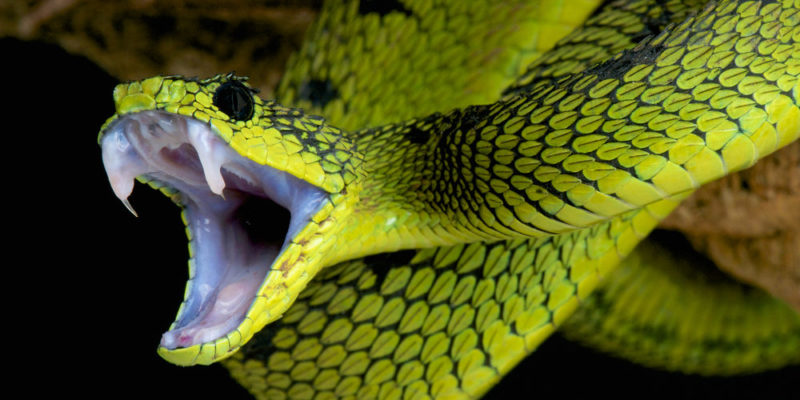We explain what snakes are, what their physical features and reproduction are like. In addition, its general characteristics and food.
What are snakes?
Snakes, also known as snakes, are legless, extended-bodied reptiles . A single species, the python , has developed small limbs over time. It is possible to find more than 3,400 species of this animal throughout the planet , a number that is constantly increasing as a result of new research and scientific explorations.
Venomous snakes, despite popular belief, account for only 450 of all species. However, those with venom bites use this tool to kill their prey and then ingest them. This is the case of species such as cobras. Other varieties kill by strangulation, such as boas .
The snakes, belonging to the suborder Serpents, are believed to come from some type of lizard , although their exact origin has yet to be confirmed by scientists.
Characteristics of the snake :
Physical features
 One of the main features of snakes is the presence of a body extended throughout and with a cylindrical structure , of variable dimensions ranging from a few centimeters to several meters, always according to the species.
One of the main features of snakes is the presence of a body extended throughout and with a cylindrical structure , of variable dimensions ranging from a few centimeters to several meters, always according to the species.They also have scales , whose function is to reduce friction during movement.
Important mandibular opening
Thanks to the muscles present in the lower jaw, snakes manage to open their mouths to surprising dimensions . This characteristic allows them to ingest their prey more easily and eat animals that far exceed their size.
-
Flexible body structure

The free articulation of their bones, for example in the skull area, provides snakes with a flexible body that is easily adaptable to different needs. This allows them to increase their hunting possibilities against larger adversaries.
-
Presence of forked tongue

They have a tongue that is forked or divided into two that allows them to capture information from two different areas , collecting data on aromas and odors present in the environment, which will be deposited in the mouth to later be processed.
-
Poor sense of hearing
They reproduce from eggs
 Most varieties of snakes reproduce oviparous, that is, laying eggs . Boas, rattlesnakes and snakes are the exception. These species give birth to fully formed individuals, retaining the eggs in their bodies until the young can develop independently.
Most varieties of snakes reproduce oviparous, that is, laying eggs . Boas, rattlesnakes and snakes are the exception. These species give birth to fully formed individuals, retaining the eggs in their bodies until the young can develop independently.
They shed their skin
 These reptiles change their skin in different periods of their life and permanently , mainly due to two issues: on the one hand, the molting marks a growth or phase change and, on the other, it allows them to recover from the wear of the skin that is it generates in its form of displacement and living conditions.
These reptiles change their skin in different periods of their life and permanently , mainly due to two issues: on the one hand, the molting marks a growth or phase change and, on the other, it allows them to recover from the wear of the skin that is it generates in its form of displacement and living conditions.
They move crawling
The snakes move on the ground by oscillating and lateral movements , in contact with the surface they are crossing. It is a characteristic that they share with other reptiles .
-
They are carnivorous

The diet of snakes is exclusively carnivorous . They feed on a great diversity of prey, including different mammals , birds , insects, fish, and amphibians . The venom produced by some species allows them to immobilize and kill their victims before ingesting them.
-
They are found in aquatic and terrestrial environments
The above content published at Collaborative Research Group is for informational and educational purposes only and has been developed by referring to reliable sources and recommendations from technology experts. We do not have any contact with official entities nor do we intend to replace the information that they emit.
Luke is passionate about fostering student involvement and connection. He studied psychology for his major and likes learning about the past. Luke aims to specialize in artificial intelligence and cybersecurity. .
Leave a reply
Your email address will not be published. Required fields are marked *Recent post

Sport: What Is It, Types, Risks, Features, Characteristics and Examples

Dogs: Emergence, Features, Characteristics, Feeding and Breeds

Story: Definition, Elements, Structure, Features and Characteristics

